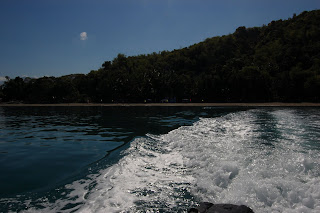Quick Facts and Figures:
Capital Barangay – Poblacion
Number of Barangays – 39
Total Land Area – 15, 436
Total Population – 20, 709
Total Number of Registered Voters – 12, 111
Total Number of Precincts – 96
Literacy Rate – 89-90%
Dialect – Kiniray-a
Religions – Roman Catholic, Aglipayan, Iglesia ni Cristo (Church of Christ), Jehova’s Witness, Protestants (UCCP, Baptist,Born Again, JIL)
Income Class – 4th Class
Lending Institutions
3 Private Institutions – Cooperatives (BMPC, EMPC, PMPC)
3 Public Institutions – Pawnshop (Palawan), Banks (Buena Bank, Card Bank)
Elementary – 6 Complete Single Grade Elementary School, 7 Incomplete Multi Grade School, 3 Primary Schools, 33 Pre-school Day Care,
Secondary – 1 Public School (Barbaza National High School), 1 Private School (Saint Anthony’s High School)
Hospital
Principal Products
rice, corn, camote, cassava, abaca, fish, rattan, fry, tilapia, banana, copra
Forest/Mineral Resource
Copper – Lumboyan
Marble – Mayos, Mablad
Coal – Lumboyan
Rattan – Lumboyan, Idao, Mayabay and Nalusdan
Abaca – Lumboyan, Idao, Nalusdan, Igtunarum
Livelihood Industries
Farming, fishing, copra gathering, abaca and rattan, bangus fry catching
Communication Facilities
SMART Telecom
GLOBE Telecom
SUN CELLULAR (Proposed)
Annual Income
2008 – Php38, 831, 194.63
2009 – Php37, 306, 373
IRA Funds
2009 – Php35, 115, 173
Boundaries
North – Municipality of Tibiao
South – Municipality of Laua-an
East – Municipality of Tapaz, Capiz
West – Cuyo East Part/China Sea
Physical Features
Upland – 75%
Narrow Coastal Slope – 10%
Interior Plains – 15%
Irrigated – 11, 541.60 m.
Rainfed – 1, 996.8 m.
Upland – 668.80 m.
Non-Agricultural – 5, 674.954 has.
Non-Commercial Forest – 1, 750 has.
Bush Land/Pasture – 2, 387 has.
Lowland Barangays
Poblacion, Yapo, Bahuyan, Binangbang Centro, Cubay, Gua, Jinalinan, Ipil, Palma, Beri, San Antonio, Capoyuan, Igpalge and Binanu-an
Other Barangays
25% of very steep land with a slope greater than 40%
Highest Peak
Mt. Nangtud, Idao (2, 325 meters or 5, 314 feet)
Other Mountain Ranges
(500-1, 300 meters)
River System
Dalanas River (feeds the largest irrigation system in the municipality)
Land Classification
Alienable and Disposable (60%)
Forest Land (40%)
Forest Cover
Primary and Secondary Forest
9, 627.4 equivalent to 62.4% of the municipal area
Population Profile and Life Expectancy
Life Expectancy – 70 years
Average Population Growth – 1.6%
Population Density – 1.12/hectare
Average Family Size – 6
Malnutrition Rate – 1.71% severe, 13.5% moderate, 84.52% mild
Crude Birth Rate – 01/1000 pop.
Crude Death Rate – 008/1000 pop.
Top Five Killer Diseases of 2007
1. Cardiovascular Disease
2. Pneumonia
3. CVA2o to Hypertension
4. Wounds (All types)
5. CA (All forms)
Agriculture
Agricultural Hectares developed to Major Crops – 2, 734.2 has.
Annual Crop Production – 10, 953.96
Palay – 4.0 metric tons/hectare
Corn – 4.3 metric tons/hectare
Copra – 1.0 metric tons/hectare
Mongo Beans – 5.5 metric tons/hectare
Peanut – 0.85 metric tons/hectare
Root Crops – 5.0 metric tons/hectare
Vegetables – 12.0 metric tons/hectare
Banana – 4.5 metric tons/hectare
Mango – 7.4 metric tons/hectare
Fishery
Total coastline – 12 kilometers
Household Fishing Dependants – 40%
Laguna – main fishing grounds fronting Jinalinan shores; considered as the “Tuna Highway”
Length of Shoreline – 10.20 kilometers
Municipal Water Areas – 15 kilometers
Coastal Population – 9, 817
Fishpond Operators – 5
Total Area of Fishpond – 9.7 hectares
Annual Production of Fishpond – 3 metric tons
No. of Coastal Barangays – 11
No. of Communal Bodies of Water – 3
Mangrove Area – 80 hectares
No. of Motorized Fishing Craft – 25
Average Catch/Month (Motorized) – 300 kgs. /month
No. of Non-Motorized Craft – 100
Average Catch/Month (Non-Motorized) – 200 kgs. /month
Project Bangus Fry Catch / Year – 1 million
Total Area of Coral Reef – 54 hectares
Annual Fish Production – 1, 800 tons
Livestock and Poultry
200 heads of carabaos
400 heads of cattles
4, 595 heads of hogs
21, 916 heads of native chicken
4, 278 heads of mallard ducks
380 heads of muscovy ducks
1, 455 heads of fighting cocks
14, 000 heads of layered chickens
23 heads of turkeys
12 heads of geese
200 heads of vaccinated dogs
400 heads of goats
6 heads of horses
Tourism
Tourist Spots in Barbaza:
Batabat Coral Reefs at Poblacion
Macalbag Falls at Mablad
Cadiao Falls and Camp Eufre at Cadiao
Seven Rooms Cave at Cadiao
Roman Catholic Church at Poblacion
Yapo Falls – Yapo
Dalanas River at Beri and San Antonio; boundary between Barbaza and Tibiao
Historical Landmarks
Gen. Leandro Fullon Monument – Jinalinan Plaza (site of peace treaty between American and Filipino forces in Panay during the American-Filipino Revolution)
Sitio Aligtos – Brgy. Palma (command post of Gen. Fullon during the revolution)




